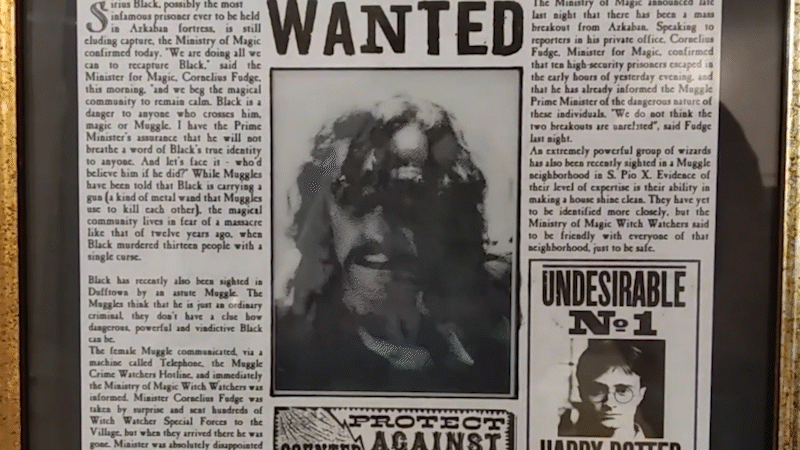News from the wizarding world is a little hard to come by for common muggles, but [Deep Tronix] has brought us one step closer to our magical counterparts with their electronic replica of the Daily Prophet newspaper.
Those familiar with the Harry Potter series will no doubt be familiar with the Daily Prophet. In the films, the newspaper is especially eye-catching with its spooky animated images, a reflection of the magic present throughout the wizarding world. This was achieved with post-production special effects for the films, but this fan-made front page of the Prophet brings the concept to life using e-paper technology and a few other interesting gadgets, all hidden away in a picture frame.
As mentioned, the heart of this project is the e-paper display and a Teensy microcontroller. While e-paper displays are excellent for displaying static text and simple graphics, they are usually not suitable for moving images due to suffering from a form of ‘burn in’, which can leave errant pixels on the screen. This means that e-paper technology typically has a relatively low frame rate for video. [Deep Tronix] has used a custom dithering library to somewhat mitigate this issue, and the results are impressive. Moving images are loaded from an external SD card, processed, and then displayed on the e-paper display, which is almost indistinguishable from the newspaper print that surrounds it.
The seemingly magical newspaper also has a face detection feature, which is enabled by a hidden camera and the venerable ESP32 microcontroller. This system integrates with the Teensy to record and then display the reader’s face on the e-paper display. A neat trick, which is made all the more eerie when these faces are later displayed at random.
We’ve seen Daily Prophet replicas before using more traditional display technology, however the move to an e-paper display goes a long way to improving the overall aesthetics, despite the lower frame rates. With Halloween just around the corner, you might just end up tricking a few people with this clever prop – check out all the build details here.
















Wow! That thing is awesome!
Maybe shorter breaks and flashes between the animations, but awesome idea!
I don’t think you could really get away without them, or shrink them by much – those are proper e-paper refresh cycles, and will be needed to keep the display working correctly… Its impressive enough just getting the animations looking almost like they have a real framerate and smoothness.
I’ve never seen my old Kindle Paperwhite gen 1 do that. Just one short flash per numerous pages.
It’s a bit of a combination of factors. The display needs some deghosting cycles in order to preserve its functionality, but in this project they are numerous because the waveform library is custom and thus not especially made for this display, but also I’ve used this display a lot and somewhat slightly ruined it with my experiments.
The newer e-paper screens don’t need as much refresh as the old ones, and it might well be doing a full refresh cycle after you stop using it..
Any sufficiently advanced technology is indistinguishable from magic. Getting closer.
Great build! – Now place a camera in a line to get into a Haunted House, and have the display show people’s faces that are in line!
oops – already done! I typed before reading the whole article!
Useful tip: hacking the circuitry and e2prom on a broken / damaged screen PRS500, 550 or 600 is a good option.
These particular units seem to be quite easy to find used, and also the back panel is simple to undo.
I’ve had issues with the screen compensation voltage not having quite enough range to work with the typical cheap used panels doing the rounds, but one of my two did run and with a few adjustments ran for several months before I noticed any ghosting issues, that were likely a failed battery rather than screen problem.
If anyone wants the other, please PM me as its cooling its heels here waiting for a project to put it in.
Would trade for a Pi 3B, 4B or Zero 2.
PLEASE NOTE: These are glass panels and *very* delicate, do not press on the glass or pull the ribbon when installing!!!!!!
“ghosting issues” :-)
It could be a bad ground somewhere so going to check that.
Any sufficiently crude magic is indistinguishable from technology ;)